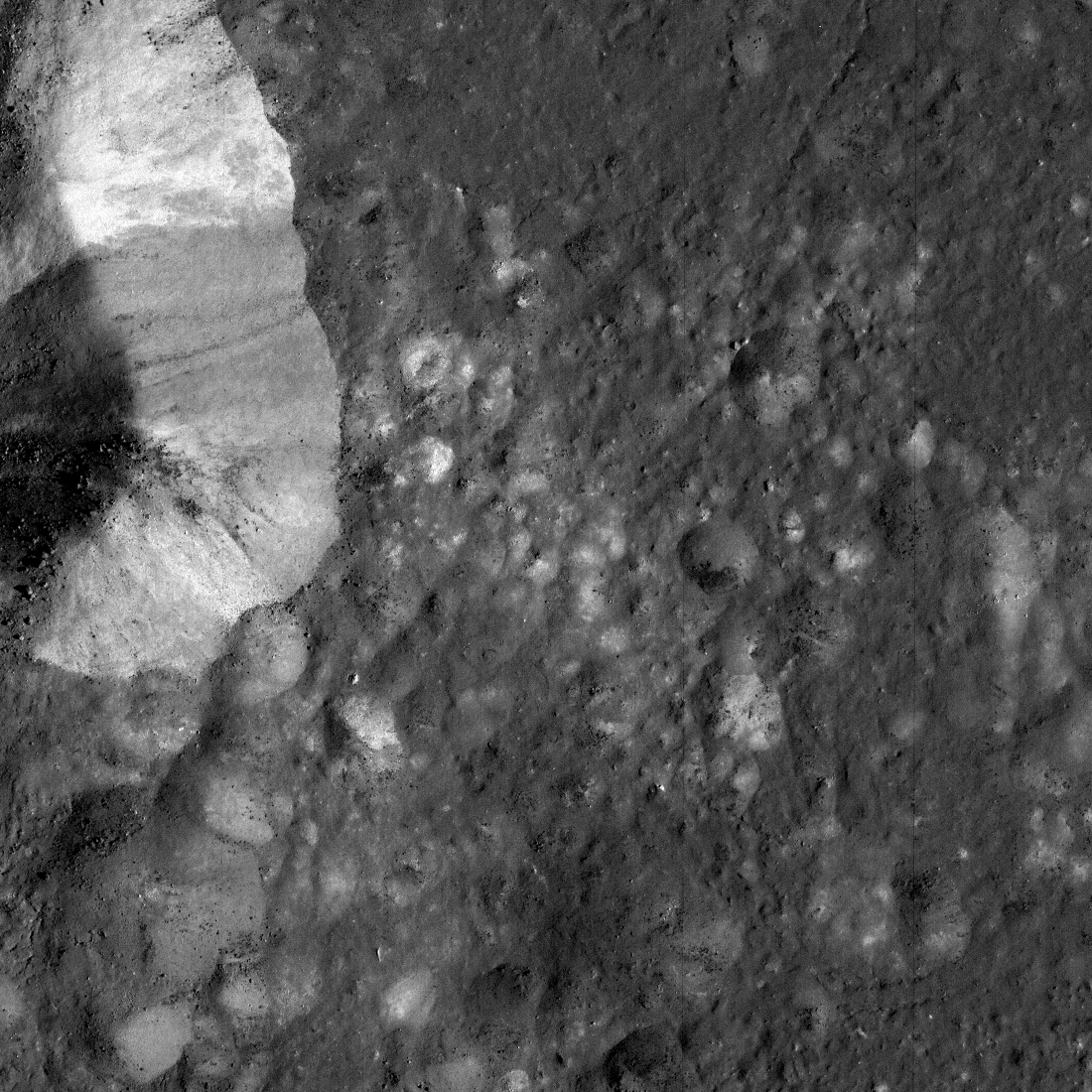
Aristarchus Crater Under Earthshine

ShadowCam captured this spectacular image on 22 February 2023 during the lunar night under a nearly full Earth. Earthshine is dim compared to secondary illumination within permanently shadowed regions — about 10 to 100 times dimmer (the phase of the Earth and the location on the Moon determines the brightness). However, this image demonstrates the possibility of using earthshine to illuminate robotic operations at night, or even astronauts working the night shift. To put night operations into perspective, earthshine on the Moon is more than twenty times brighter than moonshine (full Moon, not the drink) on the Earth. The lunar night looks pretty hospitable, at least for half the night when the Earth shines bright!
When this image was taken, the Earth was about 35 degrees above the horizon, so small areas of shadow formed on the back (from the Earth's perspective) of the Aristarchus central peak and the steep crater walls. The interior of Aristarchus crater is composed of very bright (high albedo) material; thus it is better seen than the darker basalts at the bottom of the image. Explore the full ShadowCam image below.
Related Featured Images
Posted by Mark Robinson on 30 March 2023